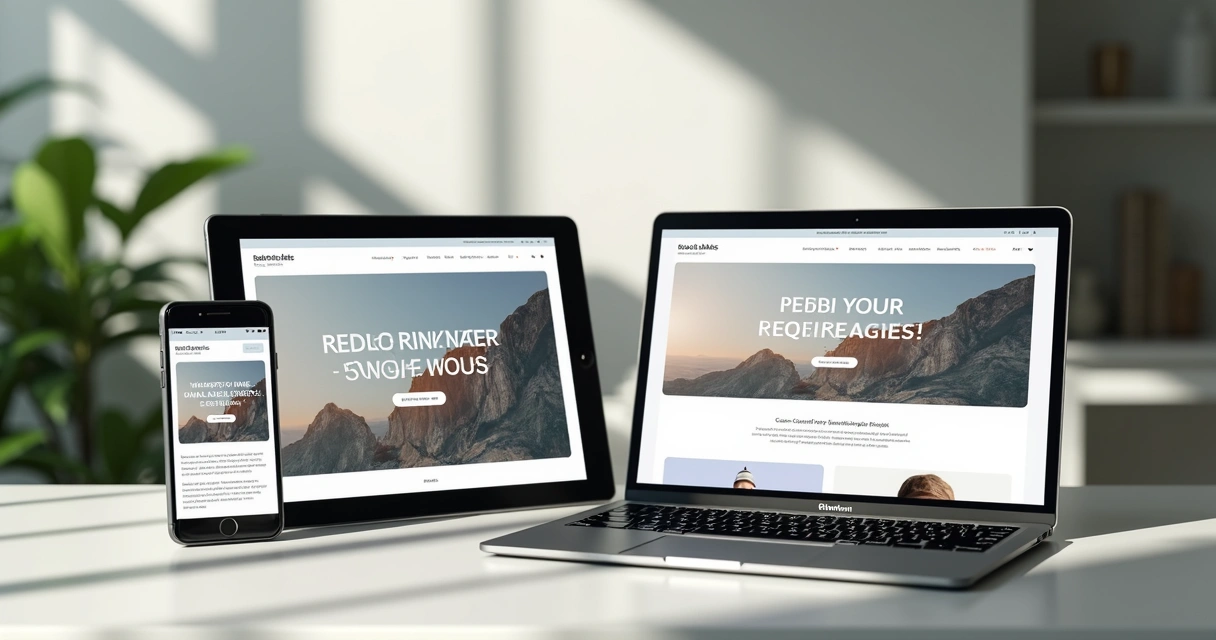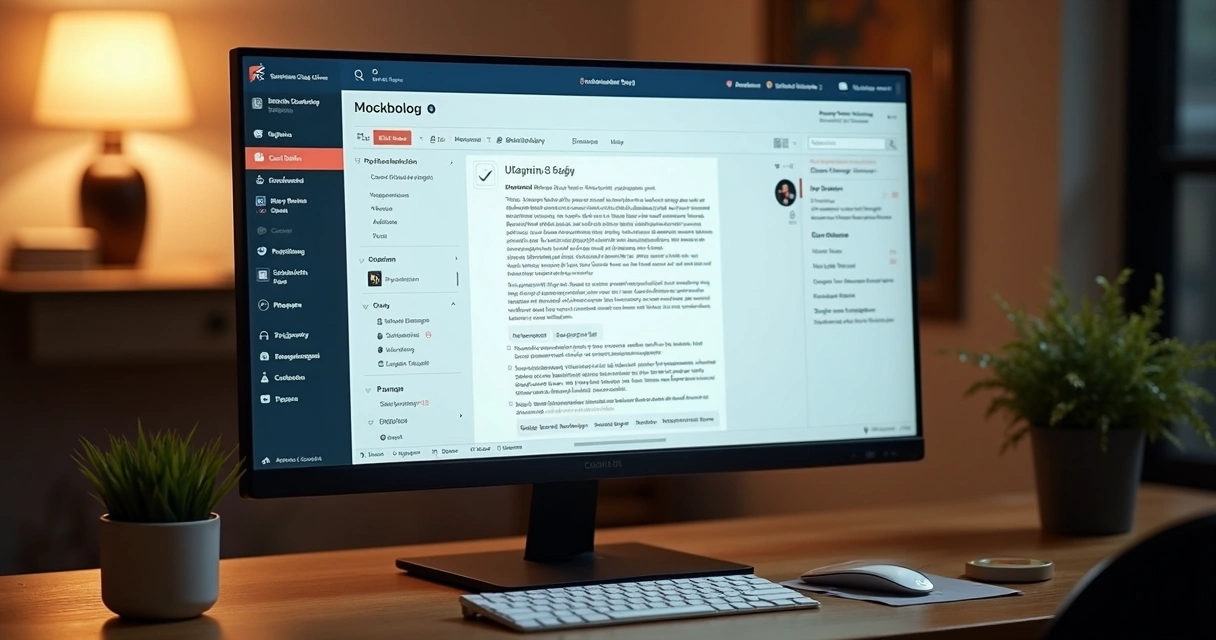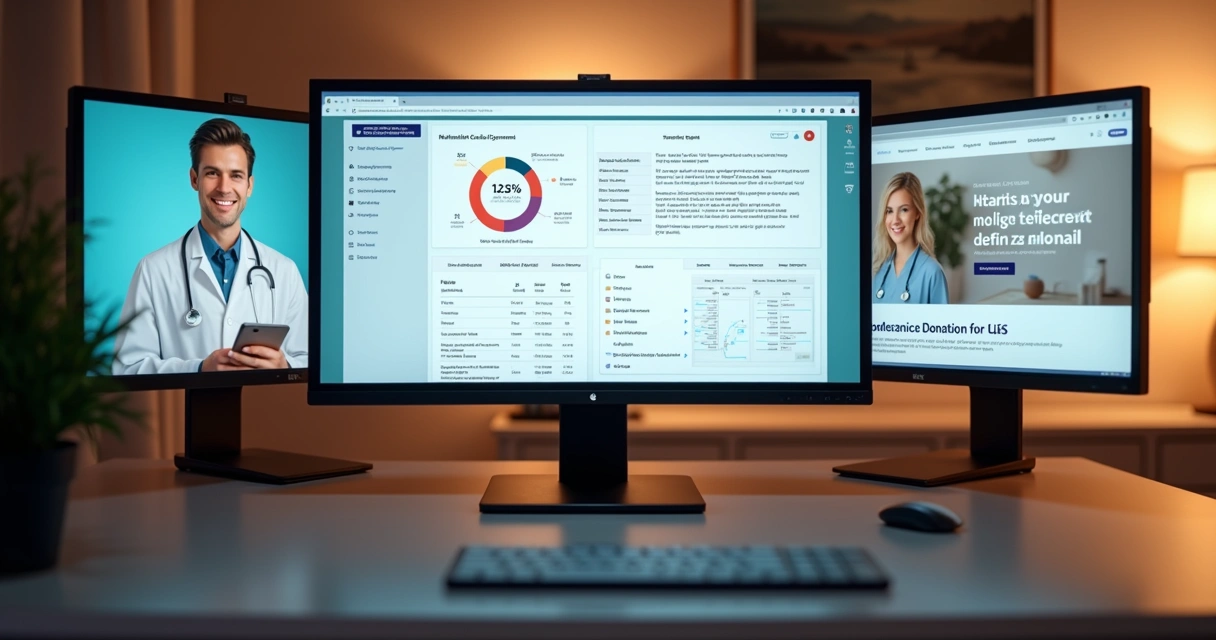If there’s one thing that has shaped my journey as a Senior Software Engineer and digital nomad, it’s seeing firsthand how a well-crafted online presence can utterly transform a business. Every industry, from retail to consulting and everything in between, feels the weight of change as more companies seek solutions that are unique and adaptable. In this article, I’ll share what I have learned over 16 years—advice both practical and strategic—about custom website development services, in a way that speaks directly to business owners, executives, and entrepreneurs who want their companies to stand out.
What you’ll read here goes beyond the buzzwords. I aim to cover not just the technical steps, but also the thinking that drives successful web projects. You’ll find stories, technical details, pitfalls, best practices, and unique advantages possessed by working with someone like me rather than one of those assembly-line agencies. Where it helps, you’ll see references to research, real-world outcomes, and even the ever-growing role of artificial intelligence (AI) in web creation.
Every detail matters, from first impression to last click.
The real value of custom website development
To start with honesty: not every business needs a tailor-made digital solution. Yet it’s clear to me that when businesses are looking for growth, scalability, and a genuine edge, off-the-shelf platforms tend to break down. I have repaired and replaced more WordPress templates and Shopify themes than I can count, only to see my clients hit walls as their needs change.
Custom web development means building exactly what serves your business, your users, and your long-term growth, instead of molding your company to fit someone else’s idea of a website.
In my experience, the standout advantages of investing in bespoke web solutions include:
- Adaptability to new markets and requirements
- Freedom from recurring platform fees and forced upgrades
- Competitive edge in user experience, integrations, and speed
- Ownership of your intellectual property and data
- Long-term cost savings over continual one-size-fits-all fixes
That flexibility is even more pronounced today because of technologies like AI, which allow businesses to automate, personalize, and even predict user needs. It’s no surprise to me that 83% of companies now list AI as a major priority in their strategies, making custom development even more valuable.
Why businesses choose custom solutions
During consultations, I like to ask founders what keeps them up at night. Usually, beyond budgets and deadlines, it boils down to being able to:
- Scale their digital operations smoothly as their company grows.
- Differ from competitors in a crowded online marketplace.
- Provide user experiences that convert visitors to loyal customers.
- Connect internal workflows and external platforms in seamless ways.
Custom website development services have the task of solving for all of these. Out-of-the-box websites rarely line up with the unique brand, technology requirements, or long-term goals of ambitious organizations. From my own story, I recall one SaaS startup that tried to bolt new features onto their Squarespace site. Within a year, they faced security gaps, slow load times, and a tangled set of plugins silencing their capacity to innovate. When I rebuilt their site on a modern framework with tailored integrations, not only did they see a boost in conversion, but also in team morale—they were no longer fighting their tools.
Your company should shape the technology, not the other way around.
Planning for success: The strategic foundation
Every strong project starts with careful planning. I never begin coding before helping clients answer these questions:
- What are your primary business goals for the site?
- Who are your users, and how do they interact online?
- Where does your website fit within wider company operations?
- What’s missing in your current digital presence?
- How should your online platforms integrate with others you use?
Without honest answers, even the most elegant design cannot mask an unfocused strategy.
I have often seen businesses misunderstand their real problem. Sometimes, they think the website needs to look fancier, but the real issue is confusing navigation or a long checkout process. Sometimes, I run simple workshops or do user interviews, sometimes we review analytics together. The best way forward is different each time, but this early step saves immense headaches down the road.

A good strategic planning process usually leads into a clear roadmap. Here’s a sketch of a typical development lifecycle I use for custom projects:
- Discovery and requirements gathering
- User persona research
- Competitor analysis (with careful attention to how I can deliver better)
- Feature mapping and prioritization
- Technical planning (infrastructure, frameworks, integrations)
- Wireframing and prototyping
The result is a shared set of expectations. Both you and I know where the project is heading, what we will measure as success, and what pitfalls to watch for. This is also the stage where my experience as a freelancer, rather than a generic agency, becomes obvious. There’s flexibility in how we communicate, iterate, and adapt.
Creative custom web design: More than skin deep
Once planning is in place, the design phase is where unique web identities truly come alive. It’s one thing to produce an attractive layout, but lasting design serves deeper purposes. I always ask: what emotions do you want your users to feel? How should your brand values come across, even before a visitor clicks a button?
Web design is not just about color and typography—it’s about making complex things feel easy, trustworthy, and memorable.
- Visual hierarchy guides user attention.
- Brand consistency reinforces trust.
- Microinteractions (little animations or feedback) boost engagement.
- Responsive layouts give everyone a pleasant experience, no matter their device.
It’s the careful attention to these, coupled with usability testing, that keeps bounce rates low and engagement high. I remember helping a health services provider revamp their appointment system. Instead of the generic “blue and white” SaaS look, we matched warm colors and inviting imagery, and inserted subtle animations to make tasks feel lighter. Their users responded immediately with positive feedback and higher online bookings.

Of course, look and feel alone are not enough. Every custom project I deliver is shaped by accessibility standards, future content needs, and the capacity to scale visually as businesses grow. A thoughtful front-end must set up a robust back-end to follow.
Front-end development: Building for real users
Front-end development, for me, is where the design translates into tangible, interactive experiences. Whether I’m using React, Vue, or something else, the main goal remains: websites should be beautiful, fast, and accessible on every device.
Some building blocks I always keep top of mind in front-end implementation:
- Responsive layouts that adjust from mobile to desktop
- Progressive enhancement to ensure old browsers can still access crucial info
- Optimized images, lazy-loading, and code splitting for speed
- Accessible forms and navigation (to support all users, regardless of abilities)
- Micro-animations that don’t distract but do add polish
There are plenty of frameworks today—each with their strengths—but the real magic comes from knowing which to pick and, more importantly, how to customize them. I’ve written more about this decision process in-depth on frameworks for scalable business solutions.
What sets my work apart is not just technical know-how but a willingness to listen. Sometimes, a business has legacy systems that must be kept in view. Sometimes, their customers have non-standard workflows. Unlike agencies bound by fixed “packages,” I build what you need, not what’s easy for me.

Naturally, this approach matters even more in multilingual, regional, or highly branded projects. It’s the difference between bland sameness and authenticity.
Back-end development: Where reliability is built
In my early days as a coder, I learned quickly that a beautiful front-end means little without a strong back-end to support it. This is the “engine room” of any online business—where logic, integrations, data management, and security all come together.
The right back-end brings peace of mind. It powers smooth workflows, fast transactions, and reliable uptime.
Here’s what I focus on for any custom back-end:
- Data modeling for your real operations, not a platform’s template
- REST and GraphQL APIs for integrations and mobile support
- Scalable cloud architecture to grow as demand rises (often using AWS or similar)
- Role-based security to keep customer and admin data separate
- Automated testing and deployment pipelines
As an independent developer, I’m free to choose the most fitting technology. PHP remains reliable for some businesses, especially those seeking compatibility with legacy systems. Modern stacks like Node.js, Python (for AI or data automation), or even Go are also in my toolkit, each one picked only after understanding your needs deeply.

Integration is another theme that comes up often. If your business depends on connecting CRM, payments, or analytics, the back-end must be flexible and robust. I have explained some of my approaches to integration (and the traps to avoid) in my article on API integration for modern systems.
AI integration: The new frontier for modern websites
The rise of AI is no longer something imagined for the future. It’s here, and I have seen it fundamentally change what businesses can offer their audiences. Not just chatbots, but smart search, personalization, predictive analytics—these are now “must-have” features for companies wanting to grow.
AI transforms websites from static brochures to living digital assistants.
The data backs this up. Studies from the National University found that 83% of companies now treat AI as a top operational priority. Meanwhile, the Federal Reserve notes that nearly all developers now use AI tools—something I see in every project.
- AI-powered content and recommendations: from product suggestions to relevant blog posts tailored for each user
- Intelligent chatbots that respond naturally, learn over time, and relieve pressure on customer service
- Voice-driven interfaces or accessibility features, opening sites up to those with different needs
- Custom data automation, enabling businesses to unlock patterns and forecast demand
But here’s the thing—a little AI does not make a site “smart.” Many big agencies tack on AI just as a checkbox. I focus on integrating it where it will really make a business more efficient or friendly, never just for show.

There’s still lots of room for more adoption. According to U.S. Census Bureau findings, only a small fraction of businesses have really taken advantage of AI-driven capabilities. This means those willing to invest now get to be first-movers—winning loyalty, lowering costs, and setting themselves apart from rivals.
Some common questions about AI on websites
- Is it expensive? It doesn’t have to be. Many AI tools today are cost-effective and open-source.
- Is it complicated? Not for your users—it’s my job to hide the complexity in the background.
- Can any company benefit? Most can. Especially those with customer service, sales, or lots of content.
Ecommerce best practices for custom development
If you’re in retail, distribution, or any space where you sell online, a tailored digital storefront becomes even more valuable. In my work building ecommerce sites, I have watched standardized solutions falter—limited payment options, slow checkout, and almost no room to differentiate.
A custom online store is not just a shop. It’s a brand experience, a marketing funnel, and a logistics hub—every piece built for your model, not the average competitor’s.

The elements I prioritize for ecommerce sites include:
- Flexible product catalog management, supporting variants, bundles, subscriptions
- Custom checkout flows (abandoned cart reminders, one-click reordering, etc.)
- Seamless payment integrations—credit cards, Paypal, Stripe, even regional gateways
- Inventory and order tracking that reflects your workflows
- Customer accounts with wish lists, history, and loyalty perks
- Internationalization: currencies, taxes, language, and shipping support
- Robust reporting and analytics baked in, not glued on
Security is especially sensitive here (more on that later). And I frequently build in AI-driven tactics—personalized recommendations, dynamic pricing, fraud detection—where it makes sense and delivers real outcomes.
I also pay a lot of attention to compliance and finance. Payment Card Industry Data Security Standard (PCI DSS), tax calculations, and localized messaging all matter. I see many competitors skip these steps, cutting corners, but in the end, businesses face costly fixes. My approach is methodical, tested, and shaped by up-to-date legal standards.
Accessibility: Building for everyone
Accessibility isn’t just a checkbox. It’s a commitment to making sure everyone, regardless of ability, can engage with your site. In every custom project I build, I adhere to Web Content Accessibility Guidelines (WCAG) and, where relevant, country-specific laws.
Accessible sites open your business to more customers, meet legal duties, and show real care for all users.
- Text alternatives for all visuals (alt text, captions, transcripts)
- Proper contrast ratios in design
- Logical keyboard navigation
- Screen reader support for headings, links, and forms
- Adjustable font sizes and color themes

Why does this matter so much? Aside from compliance, it expands your market. Estimates show one in five people have some type of disability. Every time a business excludes them, it misses leads, conversions, and positive press.
I often help clients conduct simple audits on their existing sites before starting new builds. It’s shocking how many big-name competitors ignore accessibility—even making their web apps impossible to use without a mouse or with vision challenges. I take pride in baking accessibility into every step, not just tacking it on.
SEO: Custom development for visibility
I’d be remiss not to address search engine visibility. There’s no point investing in a stunning or innovative site if nobody can find it. Search optimization, when handled well, cannot be separated from good custom web development.
SEO should not be an afterthought—clean code, thoughtful architecture, and valuable content start from line one.
- Fast page load times, even under heavy traffic
- Semantic HTML markup, headings, and meta descriptions
- Dynamic XML sitemaps and schema markup for featured snippets
- Mobile-first layouts (a major ranking factor)
- Automated technical audits and reporting
- Local SEO features for regional businesses

Unlike competitors who throw together SEO packages after launch, my projects integrate optimization from day one. That means faster indexing, stronger rankings, and fewer hidden problems.
Speaking of AI, the rise of AI-powered search—covered in Brookings research—means even more emphasis on structured data and clear, concise content. Websites need to answer questions directly, with full, stand-alone value.
Content management systems: Options and customization
Content management is another area where custom site development shines. Many businesses think the choice is only between giant, popular CMSs (like WordPress or Drupal) or custom-from-scratch systems. The truth is more nuanced. I’ve worked with every major platform and have often built custom CMSs or tailored existing ones to fit better.
- Open Source (WordPress, Drupal, Headless CMS)
- Custom CMS, tailored to your workflow and security needs
- Hybrid solutions that combine robust editing with external integrations
Your CMS should support your marketing team, not overwhelm them with complexity or restrict creativity.

I often recommend headless CMS approaches for businesses that want multi-channel publishing (web, app, IoT). But for small teams who just want smooth editing and quick updates, a simple custom backend is often better. Every business deserves a solution that fits its content creators, not just its coders.
Migrating your existing site: Challenges and strategies
Migrating an existing site is usually trickier than starting fresh. From my own experience, it’s rarely a matter of just copying files over—those attempting quick lifts end up with broken links, lost data, downtimes, or worse.
Migration is about preserving what works, removing what doesn’t, and opening doors for what’s next.
- Comprehensive audit of old content, SEO factors, and technical debts
- Mapping legacy data to match the new structure
- Staging environments for real-world testing, so nothing surprises us at launch
- Incremental go-live approach, reducing risks
- 301 redirects and careful SEO checks to maintain organic rankings
- Post-launch monitoring and fixes, just in case

Sometimes, I migrate businesses away from failing agencies or inflexible platforms. Unlike some competitors who hold your data hostage or charge exorbitant transfer fees, I make clear that you own every bit of your intellectual property and assets—I believe it’s the only ethical way to build partnerships.
Security: Modern risks and robust solutions
I’ve witnessed security breaches make headlines and destroy reputations. Custom site development must never neglect security, no matter the budget. I take a proactive stance, shaping security at every layer.
- SSL/TLS encryption as baseline
- OWASP-compliant coding and regular penetration testing
- Multi-factor authentication for admin panels
- Protection against XSS, SQL injection, CSRF
- Regular backups stored securely
AI comes into play here, too. AI-driven monitoring tools can spot unusual user activity or attack patterns the second they happen—a huge advantage against modern threats.
Security is not one feature; it’s a culture built into every line of code.

Unlike agencies who may outsource or automate security reviews, I retain control, communicate every risk clearly, and ensure you are never left guessing.
Ongoing support: Making high-performing websites last
The launch of your custom site is just the beginning. In my view, continuous support is what turns a good site into a long-term business asset.
- Real-time performance monitoring
- Automated security scans and vulnerability patching
- Ongoing SEO and analytics optimization
- Content updates and A/B testing
- Cloud resource scaling and cost control
Unlike many agencies that see support as an upsell or afterthought, ongoing care is a built-in part of how I work. My clients rest easy knowing they have a direct line—not just a faceless helpdesk.

Occasionally, I’m asked to take over support for websites built by others. More often than I’d like, I uncover neglected updates, missing backups, or failing performance. When you work with me, you get someone actively invested in your site’s success, not just a passive monitor.
Case examples: Serving diverse industry needs
Experience across different sectors sharpens problem-solving. Here are a few short stories to give you a window into how custom sites have made measurable differences:
Healthcare startup: Building trust and compliance
A telemedicine company came to me frustrated by slow response times and compliance concerns. I rebuilt their appointment system with secure patient logins, automated reminders, high-contrast visuals, and tight HIPAA controls. Not only did their user base expand rapidly, but they reduced appointment no-shows by 24%.
Marketplace platform: Finding growth in custom features
A fast-scaling e-marketplace needed advanced seller dashboards, flexible fee structures, and real-time analytics—a patchwork of plugins on a popular platform just wasn’t delivering. Working closely with their team, I developed custom management tools, auto-fraud detection (using lightweight AI), and a wallet system adapted to their business. Sales and satisfaction soared.
Nonprofit organization: Better reach, lower costs
A nonprofit seeking grants and visibility had an outdated, inaccessible site. We transformed their presence with clean, easy-to-read layouts, donation automation, and local SEO enhancements. The end result: 37% more donations online and an entirely new wave of volunteers reached through previously ignored channels.

What ties these stories together is not flashy technology for its own sake, but a commitment to solutions that serve people, automate where it helps, and grow as business needs change.
How to choose a custom website developer: Criteria that matter
It’s always tempting to compare by price or the length of a proposal. However, in my experience, long-lasting value comes from choosing a development partner who:
- Listens first, then recommends—solutions should reflect your business, not a fixed package.
- Demonstrates a track record of projects for businesses like yours.
- Offers deep expertise, not just surface knowledge, in both technology and user experience.
- Prioritizes security, compliance, and ongoing care, not just launch-day results.
- Communicates openly and delivers detailed process updates—transparency reduces worry.
- Is adaptable and proactive as your company grows or pivots to new opportunities.
Of all the differences, the most important is simple: Your developer should be invested in the long-term outcome, not just a short-term checklist. In the world of agencies and templated shops, this quality is rare.
If you want to see concrete proof, I often encourage prospects to look through recent project outcomes and talk to past clients. You’ll find that my partnerships outlast most—many businesses return for upgrades, integrations, and even entirely new digital ventures.

I won’t hide that there are competent competitors out there. But in my experience, when you value collaboration, ownership, ongoing improvements, and honest feedback, you’ll find fewer and fewer who deliver at the same level. Generic approaches yield generic outcomes. I stake my whole business on going deeper and developing partnerships, not just web pages.
Award-winning service, global flexibility
As a digital nomad, I’ve provided solutions to businesses on nearly every continent. This has given me the flexibility to adopt best practices from different cultures and markets. It means I can fit your schedule, understand the needs of remote teams, and keep pace with always-on operations.
There’s a reason my background matters—I bring not just experience, but continual curiosity and pride in each project. Whether you need an overhaul, new features, or just unbiased advice, you’ll always find me engaged long after launch day.
And if you’d like specifics on the types of services I provide—from full-stack applications, data automation, to deep system integrations—you’ll find options tailored exactly for modern businesses and scaling teams.
Conclusion: Building for what’s next
Through all the years and all the projects, one thing remains the same: Custom website development isn’t about keeping up with technology just for the sake of it. It’s about building a real foundation for businesses to connect, engage, and grow sustainably.
With every new tool, trend, or technical leap, what matters most is whether it actually solves problems for you and your users.
If you see your business differently, want to move faster, or need digital experiences that feel both unique and robust, I hope this article makes clear why a personal, expert-led approach works best. I invite you to reach out—whether you’re considering a project soon or simply want a strategic audit of your current digital setup. Let’s talk about how we can make your next idea a reality, and why working with me is the right move for sustainable, rewarding growth.
Frequently asked questions
What is custom website development?
Custom website development refers to the process of designing, developing, and deploying a website tailored specifically to the needs and goals of your business. Unlike template-based or off-the-shelf solutions, this approach involves building every feature—user experience, back-end systems, design, security, and integrations—around your unique requirements. That means full flexibility, better performance, and a digital property that grows with you, not the limit of a generic platform.
How much does a custom website cost?
Custom website pricing varies widely. Smaller business sites may start in the low five figures, while large, feature-rich, or highly integrated projects can exceed six figures. Costs depend on required features, design depth, content management, third-party integrations, and long-term support needs. As a freelancer offering personalized services, I often provide better value and higher adaptability than large agencies since my process involves less overhead and direct collaboration. If you’d like an accurate estimate, I’m happy to discuss your specific needs one-on-one with no obligation.
Is custom website development worth it?
In my experience, investing in a custom-developed site is well worth it for businesses aiming to grow, differentiate, or solve problems that generic systems cannot handle smoothly. You gain control over every aspect of the digital experience, avoid endless patchwork or recurring subscription fees, and prepare your business for future changes (such as integrating AI or adapting to new regulations). For businesses with unique workflows, regulatory demands, or branding goals, the return on investment consistently outweighs the upfront spend.
How to choose a custom web developer?
Choosing the right developer is about more than technical skill. Look for someone who listens, who takes the time to understand your industry and users, and who can explain their process transparently. Ask for real project examples and references. It’s a good sign when the developer or freelancer provides end-to-end support—from strategic planning and creative design through to launch-day and beyond. My advice is to work with partners who offer scalability, direct communication, and who care about your business outcomes, not just initial delivery.
What are the benefits of custom websites?
Custom websites offer many benefits: true brand differentiation, control over features and third-party integrations, improved security, and scalability as your business evolves. They can better support accessibility, advanced SEO tactics, and the integration of AI for smarter automation and user experience. You’ll never be held back by plugin or template limitations, and all your data stays yours—no surprises down the line. In short, you get a solution that matches your vision, not someone else’s mold.
